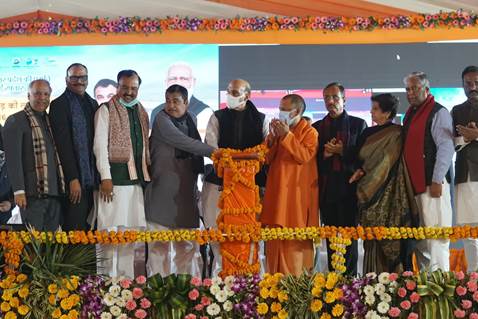Nestled amidst the majestic Himalayas, Himachal Pradesh, with its snow-capped peaks, verdant valleys, and ancient temples, has long held a special place in the hearts of pilgrims and tourists alike. But for many devotees from the state, the journey to the священный город of Haridwar often meant navigating a labyrinth of connecting trains, adding an unwelcome layer of stress to their spiritual quest. This is where the recent announcement by Union Minister Anurag Thakur, extending the Una Himachal-Saharanpur MEMU train to Haridwar, resonates as a transformative step, not just for convenience, but for the state’s overall development.
 Imagine the countless devotees from Himachal Pradesh, their hearts brimming with devotion, embarking on a pilgrimage to Haridwar. The prospect of multiple train changes, navigating unfamiliar routes, and the precious time lost in transit could often dampen their spirits. The extended train service acts as a divine intervention, offering a direct and convenient passage to the holy city. Darshan at the revered Ganges or offering prayers at the священный ghats of Har ki Pauri becomes a less daunting prospect, potentially encouraging more faithful visits and boosting religious tourism in the region. This seamless connectivity not only eases the physical journey but also paves the way for a more profound spiritual experience.
Imagine the countless devotees from Himachal Pradesh, their hearts brimming with devotion, embarking on a pilgrimage to Haridwar. The prospect of multiple train changes, navigating unfamiliar routes, and the precious time lost in transit could often dampen their spirits. The extended train service acts as a divine intervention, offering a direct and convenient passage to the holy city. Darshan at the revered Ganges or offering prayers at the священный ghats of Har ki Pauri becomes a less daunting prospect, potentially encouraging more faithful visits and boosting religious tourism in the region. This seamless connectivity not only eases the physical journey but also paves the way for a more profound spiritual experience.
Himachal Pradesh’s natural splendour and cultural richness have mesmerized travellers for centuries. But for many, accessibility often posed a challenge. The new train service acts as a key that unlocks the door to this hidden gem. Imagine tourists from across the country stepping off the train at Una, eager to explore the charming hill stations like Shimla and Dalhousie, or delve into the spiritual havens of Kangra and Mandi. This synergy of pilgrimage and tourism holds immense potential. Local economies can flourish with the influx of visitors, creating jobs and opportunities for residents. The state’s diverse offerings, from adventure sports to serene monasteries, can be showcased to a wider audience, transforming Himachal Pradesh into a sought-after گردشگری destination.
Minister Thakur’s vision extends far beyond mere convenience. He recognizes the ripple effect this initiative can have on the state’s development. The improved connectivity empowers young people serving in the armed forces, offering them easier access to their hometowns, and bridging the gap between their सेवा and their families. The Una-Hamirpur railway line project, championed by the Minister, promises to be a game-changer. Efficient freight movement, enhanced industrial activity, and the creation of new business avenues are just some of the anticipated benefits. This infrastructure project, coupled with the extended train service, has the potential to unlock the economic potential of the region, creating a more prosperous future for its people.
Minister Thakur’s acknowledgement of past initiatives like the Vajpayee-era industrial package and ongoing infrastructure projects underscores a commitment to continuity and progress. This ensures a holistic and sustainable development approach, where each initiative complements the other, creating a virtuous cycle of growth. The Minister’s reference to the cultural significance of the Kangra Valley and its rich heritage highlights the importance of preserving the state’s unique identity while embracing development.
Minister Thakur’s assurance of continued efforts towards bridge construction and track restoration paints a picture of a future-focused on seamless connectivity. This not only benefits pilgrims and tourists but also opens doors for trade, commerce, and overall accessibility within the state. Imagine a Himachal Pradesh where remote villages are connected by efficient rail networks, where local produce reaches wider markets, and where students have easier access to educational opportunities. This vision of a connected and thriving Himachal Pradesh is no longer a distant dream; it’s a journey that has begun, with the extended train service to Haridwar serving as a symbolic first step.




